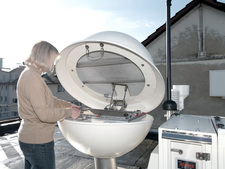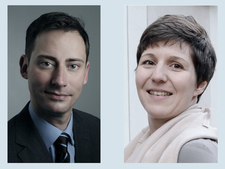-
Topics
subnavigation
Topics
Electromagnetic fields
- What are electromagnetic fields?
- Static and low-frequency fields
- Radiation protection relating to the expansion of the national grid
- High-frequency fields
- Radiation protection in mobile communication
Optical radiation
Ionising radiation
- What is ionising radiation?
- Radioactivity in the environment
- Applications in medicine
- Applications in daily life and in technology
- Effects
- What are the effects of radiation?
- Effects of selected radioactive materials
- Consequences of a radiation accident
- Cancer and leukaemia
- Genetic radiation effects
- Individual radiosensitivity
- Epidemiology of radiation-induced diseases
- Ionising radiation: positive effects?
- Risk estimation and assessment
- Radiation protection
- Nuclear accident management
- Service offers
-
The BfS
subnavigation
The BfS
- About us
- Science and research
- Laws and regulations
- BfS Topics in the Bundestag
- Links
Current measured values of iodine-131

![]() Trace analysis air-borne particle collector on the roof of the BfS branch office in Freiburg
Trace analysis air-borne particle collector on the roof of the BfS branch office in Freiburg
In the first few weeks of the year 2017, very low concentrations of iodine-131 were measured in the ground-level air at various trace analysis laboratories in Europe. Among them was the measuring station of the Federal Office for Radiation Protection (BfS) in Freiburg.
The activity concentrations were in the range of millionths becquerel per cubic metre and below. These are very low values which can only be measured by highly sensitive detectors in the first place and which do not present a cause for concern.
Such detections are not unusual and were also observed in the past, mostly in winter in stable high-pressure weather conditions with low wind velocities and inversion.
Low concentrations of iodine-131 were initially measured in the 2nd calendar week 2017 in the north of Norway, in Finland and the Czech Republic and in the following weeks also in Germany, France and Spain. It is currently hardly possible to find out the location of the source and whether there is one source or several sources.
Iodine-131 is an artificial radionuclide used, among others, in the medical field. It also generates during the operation of nuclear power plants. However, based on the measurement results, experts do not see this as an indication of a nuclear accident.
A correlation between an incident in the Norwegian research reactor Halden at the end of October 2016 that had been reported by online media in March of this year and the values currently measured can be largely excluded, too, because of the very short half-live of iodine-131. Iodine-131 has a half-life of 8 days. That means that after 8 days only half of the original activity exists as a result of radioactive decay. Furthermore, the International Atomic Energy Agency (IAEA) has not reported another and similar incident in the Halden research reactor in January of this year, either.
State of 2017.03.14



